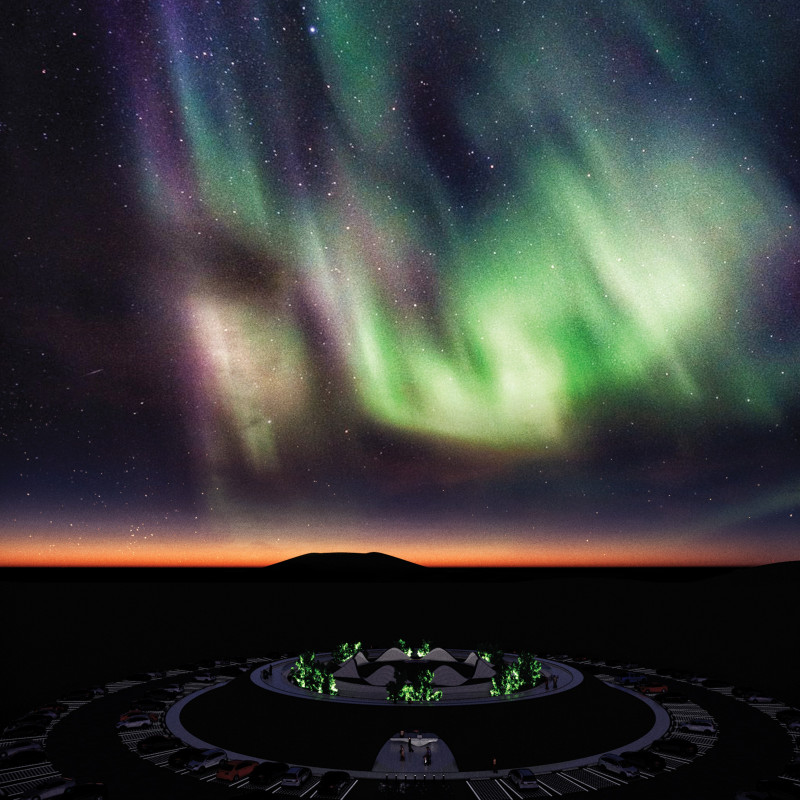5 key facts about this project
The Iceland Volcano Museum is located near Hverfjall Volcano in the Myvatn region of Iceland. It is designed to educate visitors about the geological history of the area, with a strong emphasis on connecting the building to its natural surroundings. The concept focuses on creating an experience that allows visitors to appreciate the relationship between the museum and the nearby volcano, offering insights into the region’s unique geological features.
Architectural Layout
The interior layout of the museum promotes exploration and curiosity. Visitors move through a series of carefully structured spaces that encourage gradual discovery of the exhibits. The modular and symmetrical design allows for smooth circulation and efficient use of space, providing various activities and educational displays while maintaining order and clarity.
Construction Methodology
The building primarily utilizes 3D printing technology, incorporating a concrete mixture that includes volcanic ash sourced from the area. This method enhances sustainability by reducing the carbon footprint related to transportation of materials. By using local resources, the design establishes a direct connection to the geological elements that define the landscape.
Sustainable Features
A notable aspect of the museum is its double skin facade, which significantly improves energy efficiency. This design feature lowers heating needs in winter and controls heat gain from the sun in summer. It also supports natural ventilation and sound insulation, creating a comfortable atmosphere inside the building.
Furthermore, the installation of a geothermal heat pump and a rainwater cistern highlights the museum’s dedication to sustainability. The geothermal system draws on stable subsurface temperatures to provide heating, while the rainwater collection system allows for resource reuse, reducing environmental impact.
Large windows throughout the building frame views of the Hverfjall Volcano. They let in ample natural light and create a direct connection between the indoor spaces and the stunning outdoor landscape. This aspect of the design reinforces the relationship between the museum and its geographical context, inviting visitors to engage with the beauty of the Icelandic terrain.























































